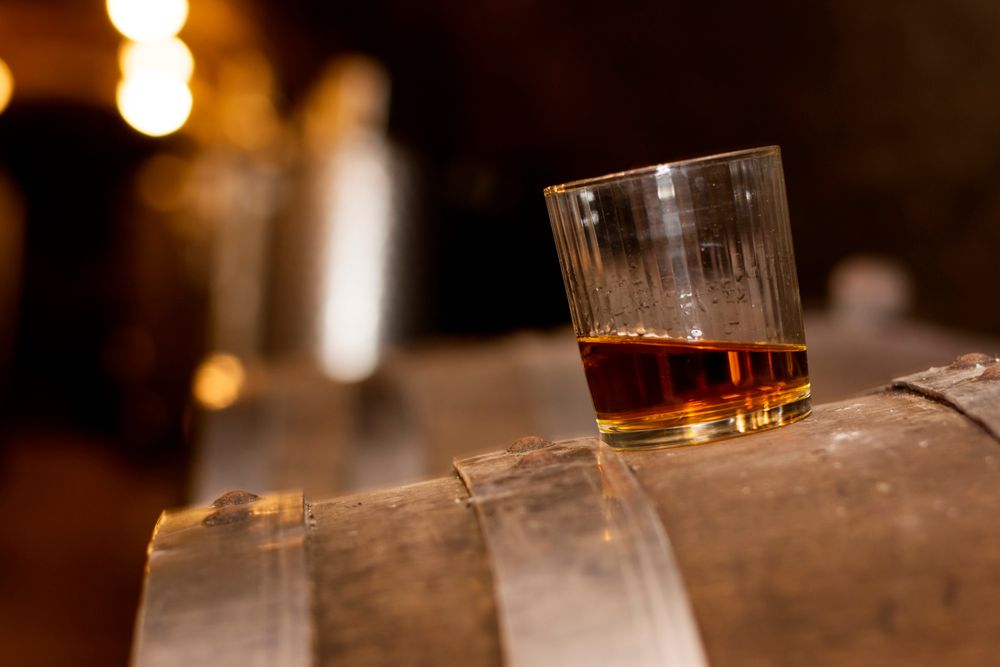The Seasons of Whisky

The seasons don't change on a rigid cutover. It's not summer one hour and then suddenly autumn the next. Instead, subtle cues tell us a new season is approaching. When winter turns to spring, the sun feels warmer on our skin, pleasantly toasting our cars as they sit idle in the parking lot. Small pockets of chartreuse dot the tree limbs. In time, the air fills with the aroma of flowers. Birds and insects start making brief cameos as we walk through the park.
Japanese culture captures the ebb and flow of seasons in the concepts of hashiri, shun, and nagori. Hashiri is the beginning, shun is the peak, and nagori is the waning season. The Japanese pay attention to small incremental changes instead of one large switch from one season to the next. Each season has a hashiri, shun, and nagori. It's an exciting and beautiful way of viewing the world.
There are three ways these concepts apply to whisky: maturation, tasting, and blending.
Maturation
Like the seasons, maturation doesn't happen all at once. There are cycles of development that ebb and flow over time. A master distiller or master blender tries to find the perfect combination of wood influence and spirit character that creates the desired flavor profile.
The diagram below illustrates this concept. Different points of maturation have different characteristics. Enough time must pass to eliminate unwanted characteristics and introduce cask influence, but not so long that the distillery character is lost. Each cask goes through its cycle and may be in a different stage than others.

Hashiri maturation is when the whisky is still grain-forward in flavor with only a tiny barrel influence. When bottled too quickly, the spirit hasn't mellowed out and can overpower the flavor. Also, the necessary subtractive effects of aging haven't taken hold, leaving in unpleasant flavors. However, some young whiskies, such as Bruichladdich Octomore (5 years old) or Ardbeg Wee Beastie (5 years old), show that if the core spirit and casks are high quality, only a few years are necessary to provide the flavors you need.
Shun maturation is the peak. Every distillery has that one peak time where the perfect marriage of barrel influence and spirit creates an exciting and complex dram. A distillery releases a single cask offering when a specific cask is in the shun stage and is so good it shouldn't be blended with others. Talisker 18, Glenmorangie 18, and Springbank 15 strike me as whiskies firmly in the shun stage. Rye and Bourbon whiskies reach their shun at about 3-8 years.
Finally, nagori is the stage at which the barrel starts to overpower the spirit within. You begin to get more wood influence, and a large amount of tannins creates an astringency that turns many off. However, there can be elegance found even in the waning years. Many very old whiskies are in the nagori stage but are still released because they have qualities many like. I have two of the Glendronach single cask series, a 22-year-old and a 27-year-old. The 22 is clearly in the shun stage, near perfection. However, I find the 27 to be in the nagori stage. It's a tad over-oaked, but with time and oxygen, it is still a fantastic whisky. Scotches that are 25 years old and up have a higher chance of being in nagori, but with Bourbon, that number drops drastically. I would expect a Bourbon older than 12 years to be nearing nagori.
Over time, master blenders sample casks to find out where they are in the journey. A blend of several casks at different stages often creates a fantastic harmony.
Tasting

The concepts of hashiri, shun, and nagori translate well to tasting in two different ways. First, in understanding how the flavors change in whisky over time, including what can go wrong. Second, in the process of tasting itself.
Using these concepts in tasting helps you to take your time and appreciate every part of tasting a whisky. This concept also helps when comparing different releases from the same distillery, as we can track the progress of a spirit through ages and maturation plans.
In the book, The Way of Whisky by Dave Broom (from which I first learned this way of thinking), Shinji Fukuyo, chief blender of Suntory, explained it quite eloquently.
Hashiri is about expectation, a food that has not fully reached its prime–or a drink like Beaujolais Nouveau! Or a whisky that is very fresh and vivid, but not mature enough yet. Shun is at the centre of the season and the best time to eat. As a whisky, it is a peak of maturation. Nagori is when people want to enjoy the final time, and at the same time anticipate the next season. We can also find some beauty in whisky that is overaged. That is sometimes deep bitterness that reminds me of its beautiful maturation peak.
Therefore, when you have a chance, take time to appreciate every sip of a whisky and think about the story it tells about how it was made and where it might be on the cycle of seasons.
From a practical standpoint, the concepts of hashiri, shun, and nagori also factor into the act of tasting itself. When you first pour a whisky, it's in the hashiri stage. Fresh out of the bottle, very volatile compounds will escape first. As it sits and oxygen starts working, the flavors change as it enters shun. Granted, many finish their glass before nagori, but we could say that nagori is when we add a touch of water to see how it changes, for once we add water, we can't go back to what once was.
Even individual bottles follow this cycle. You'll often notice subtle changes in a whisky as you drink more of it and more oxygen enters the bottle. Oxygen interacts with the whisky, releasing new compounds, deepening some flavors, and reducing others. After the level gets too low, flavors may start falling flat, and it's time to finish the bottle– hopefully with friends at hand.
Blending
Blending whisky combines the philosophies we've already discussed with some new ideas. For example, blending casks requires the blender to understand into which stage each cask currently falls. A cask too far into the hashiri or nagori stages can be helped with other casks in shun while adding some unique traits to round out the blend. Many non-age-statement whiskies take casks of several ages to find the correct balance and flavor profile.
Even the blending process itself has a hashiri, shun, and nagori. Blends should spend time together to "marry," helping to form new compounds. When making my blends, I've noticed that their flavor a few days later, as opposed to a few hours after mixing them, can be quite different. Some have only gotten better over time.
Learn and Respect the Seasons of Whisky
It's up to you whether all of this information is just intriguing musing or has a transformative effect on your enjoyment of whisky. I hope to keep these principles in mind while exploring the whisky world.
It's so easy to get caught up in the next cool or unique whisky that you forget to enjoy each sip of the glass before you. I hope this article will help us all take our time and truly enjoy every sip of every glass in the company of friends and family.





